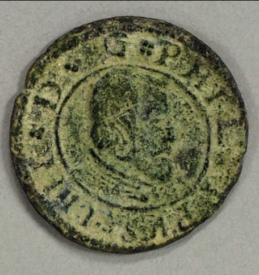
Coin discovered in the park, minted in Madrid, was likely made in 1662 or 1663
Spanish treasure that predates the arrival of Columbus by 200 years has been found in a US national park.
The two coins, one minted in Madrid in 1660 and the other made around the 1200s, were found lying on the floor at Glen Canyon National Recreation Area, Utah.
Their presence in the desert remains unexplained and no information has been released about whether they were found with other artifacts.
Spanish explorers arrived in Mexico in the 1500s and began exploring north, although there is no record of them being in America at the time the coins were made.
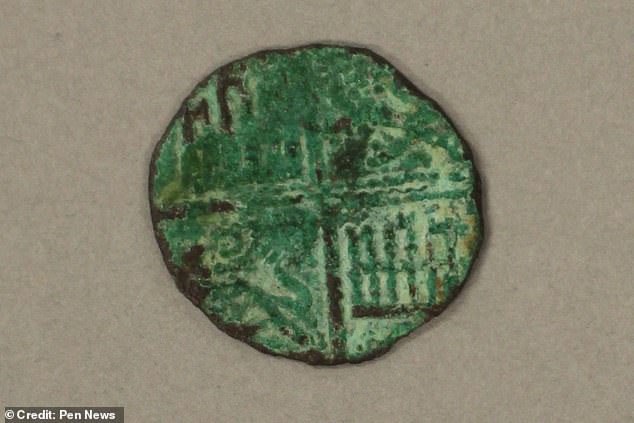
Spanish treasure that predates the arrival of Columbus by 200 years has been found in a US national park. (Pictured) The oldest coin found, which has been tentatively dated to the 1200s
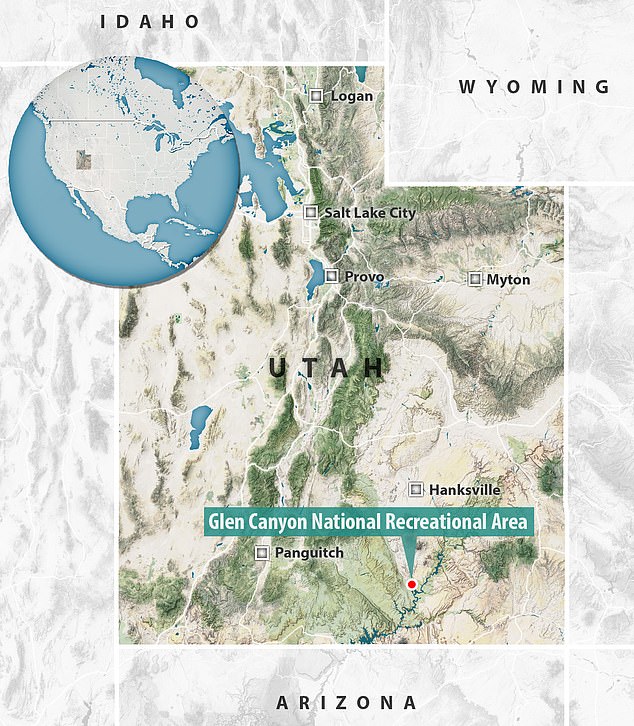
A map showing the location of Glen Canyon National Recreation Area in Utah, US
Archaeologist Glen Harmon, from the national park service, said: ‘A visitor was hiking in one of the canyons around here and he found these two strange things.’
He took them home and, after realizing they were old Spanish coins, returned them to the park.
‘Based on the design we’re very confident that one of the coins – the larger one – is called the 16 maravedi.
‘Experts we were talking to identified it as being minted in Madrid, based on its marks, probably in 1662 or 1663, which puts it in the reign of Philip IV.
‘The other coin – and we haven’t got a confirmation back on this yet – looks like it might be something dating from the mid-to-late 13th-century.’
It’s a mystery how such old coins have turned up in an area that wasn’t visited by Spanish explorers until 1776.
However, archaeologists are working on four main theories.
They may have been left by early Spanish settlers or explorers, traded with native American tribes possibly in Mexico and then lost in the canyon, or someone brought a really old coin to the continent.
However Dr Rory Naismith, lecturer in Medieval British History at King’s College London, speculated that the coins may have been dropped by a modern collector.
‘It would be very strange, in a genuine early modern deposit, to have coins from such widely separated periods,’ he said.
‘These would not have been in circulation at the same time in Spain. With no further context, it is more likely that they are a modern loss: Basically dropped by a coin collector.
‘This is not necessarily as unlikely as it sounds. A 19th-century shipwreck off the south coast of England was found to be full of ancient and medieval coins from the Mediterranean.
‘Old coins were also a favored souvenir for soldiers returning from the Middle East and in the two World Wars.’
If the coins were dropped by early Spanish settlers, archaeologist Harmon said that’s really exciting as there is little documentation of early Spanish settlement.
‘The earliest Spanish presence in the Glen Canyon area is 1776 when Father Atanasio Dominguez and Father Silvestre Velez de Escalante came through.
‘But they were nowhere near the area where these coins were found, that we know of.’
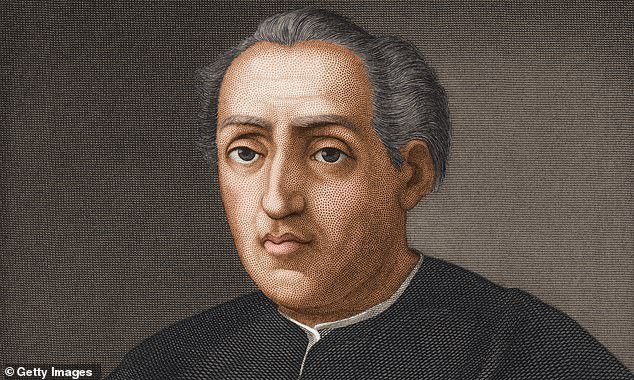
Christopher Columbus led the first major Spanish expedition to the Americas, which went to Caribbean islands and the coastline of Central America, shortly before Europeans began heading to the area in the 1500s
‘Does this point to an early Spanish presence that is unknown or really poorly documented? That’s one possibility.’
However, it’s also possible that the coins were traded with a native American tribe and then later lost at the canyon.
‘That would also be really cool just to see that kind of connection between the early Spanish and native Americans at that time,’ said Harmon.
But instead the old coins may have been brought across the Atlantic long after they were minted.
‘If that really is a 13th-century coin, that does not indicate 13th-century Spanish were over here,’ said Harmon.
‘That indicates that someone brought over a coin that was really old even then.’
A final theory is that the coins were dropped by a tourist.
As they were found among litter archaeologists aren’t ruling it out, although they said that it seems unlikely.
Columbus set sail for the Americas on August 3, 1492, firing the starting gun for European colonization of the area.
The first Europeans are recorded in Utah as part of the 1765 Spanish expedition led by explorer Juan Antonio de Rivera. He claimed the area for Spain and found the Colorado river.
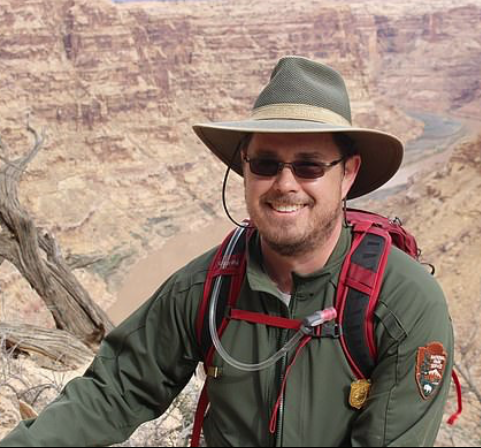
Park archaeologist Glen Harmon said that they are working on four theories for how the coins came to be there, including that they were left by previously undocumented settlers and that they may have been traded with native Americans and then left there
Then in 1776, Franciscan priests led by Escalante and Dominguez came through as they tried to find a route from Santa Fe to California, and then came back after their trip was unsuccessful.
In the early 1800s fur trappers looking for new hunting grounds show up in the area, and Salt Lake City is founded by Jim Bridger.
However, these coins may come from a previously undocumented expedition. There were gold deposits along the Colorado river at this time, and an interest in finding a route to California, leaving scope for a possible further expedition.
The coins were found near the Halls Crossing Marina on Lake Powell. However, the exact location is being kept secret by park officials until they can check there for more artifacts.
The park is concerned about metal detectorists coming there to search for treasure, despite this activity being prohibited within its boundaries.
Written by Luke Andrews for The Daily Mail ~ May 9, 2009








